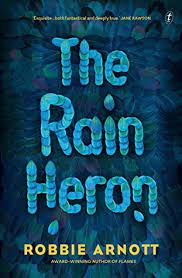I was watching Eric Karl Anderson aka Lonesome Reader’s most recent Booktube video this morning, in which he goes through his top ten novel lists from the past five years, before picking out an overall top ten, a sort of master key to his reading experiences over what has been, I’m sure everyone will agree, an unsettling and in many ways game-changing period in our history.
I always enjoy Eric’s videos – he’s a discerning, highly intelligent and curious reader with a taste in books that frequently overlaps with my own. He is also a Joyce Carol Oates fan (if you’ve not seen his Zoom interviews with JCO from last year I would urge you to seek them out) which is one more good reason to follow him so far as I’m concerned. I’ve been making lists and notes of all the books I’ve read for going on ten years now, so I thought it might be interesting, and valuable, to see what my own top ten choices from the past five years would be.
Like many of the personal reference documents on my hard drive, my ‘books read’ files often end up being tens of thousands of words long, as I make notes not just on the books I have read in any given year, but also the books I want to read, that have caught my attention, links to interviews with writers and other critical articles, stuff that might turn out to be useful and that I don’t want to become lost in the ever-expanding labyrinth of emails, bookmarks and reminders that form the hinterland of our online lives. These documents therefore are a kind of reading journal, disorganised and full of loose ends, but always fascinating to look back on. As a record of my passions and compulsions, the way my literary interests have shifted and changed, sometimes looping back in a circle to where I left off, they are irreplaceable.
As I went through the lists, I noted down all the books I instinctively felt should make the final cut. The process was strange, and even painful as I found myself scrolling past books I loved at the time and still rate highly yet weren’t mind-altering enough to make it through. What I found most interesting is the way books tended to come in tranches, as I stumbled upon a seam or subset of reading that turned out to be particularly meaningful or useful. (NB: These are books I read during the past five years, not necessarily books that were published during the past five years. Neither did I include re-reads, or ‘pure’ non-fiction. )
This first list numbered thirty-eight titles. My intention had been to trim them down to the final ten before posting, but I have decided to leave them in place, listing them in the order I read them, rather than alphabetically, as this seems more in keeping with what this selection is about. Now I’ve cleared all the year-end lists away, this is what I am left with, the books I have to choose from. What do they say to me and about me, and more to the point, how am I going to whittle them down to only ten?
H is for Hawk, by Helen Macdonald
Dust to Dust by John Cornwell
The Border of Paradise by Esme Weijun Wang
Infinite Ground by Martin MacInnes
The Red Parts by Maggie Nelson
A Separation by Katie Kitamura
H(A)PPY by Nicola Barker
This House of Grief by Helen Garner
Reservoir 13 by Jon McGregor
The Lost Daughter by Elena Ferrante
Death of a Murderer by Rupert Thomson
Joe Cinque’s Consolation by Helen Garner
When I Hit You by Meena Kandasamy
Dept of Speculation by Jenny Offill
Universal Harvester by John Darnielle
Missing by Alison Moore
Falling Man by Don DeLillo
The Second Plane by Martin Amis
Attrib by Eley Williams
Berg by Ann Quin
First Love by Gwendoline Riley
The Cemetery in Barnes by Gabriel Josipovici
Munich Airport by Greg Baxter
As If by Blake Morrison
The Sing of the Shore by Lucy Wood
The Porpoise by Mark Haddon
Leaving the Atocha Station by Ben Lerner
The Divers’ Game by Jesse Ball
Under the Volcano by Malcolm Lowry
The Glass Hotel by Emily St John Mandel
Nudibranch by Irenosen Okojie
Minor Detail by Adania Shibli
Katherine Carlyle by Rupert Thomson
The Old Drift by Namwali Serpell
Born Yesterday by Gordon Burn
The First Stone by Helen Garner
The Inland Sea by Madeleine Watts
Strange Hotel by Eimear McBride
*
After staring at this list for a long time, I have reached my decision. As for my criteria, I decided in the end to go with the single, simple question: if you could only save ten of these books from a fire, which would they be? An old chestnut yes, but as a question it has a way of cutting right to the chase. Even then, I changed my mind a couple of times, swapping one title out for another at the last minute, and must have spent at least twenty minutes havering over my final choice, simply because I wanted to keep my options open.
But here, in the order I first read them, are my ten favourite books of the past five years (2016-2020):
Infinite Ground by Martin MacInnes
A Separation by Katie Kitamura
Reservoir 13 by Jon McGregor
Attrib by Eley Williams
Berg by Ann Quin
Under the Volcano by Malcolm Lowry
Minor Detail by Adania Shibli
Katherine Carlyle by Rupert Thomson
The Old Drift by Namwali Serpell
The First Stone by Helen Garner
I’m sure that on a different day, my choices might be different again. What I know for certain though is that these ten books have been a force for change in my thinking and in my writing, and will continue to exert their influence as we move forward from here.
